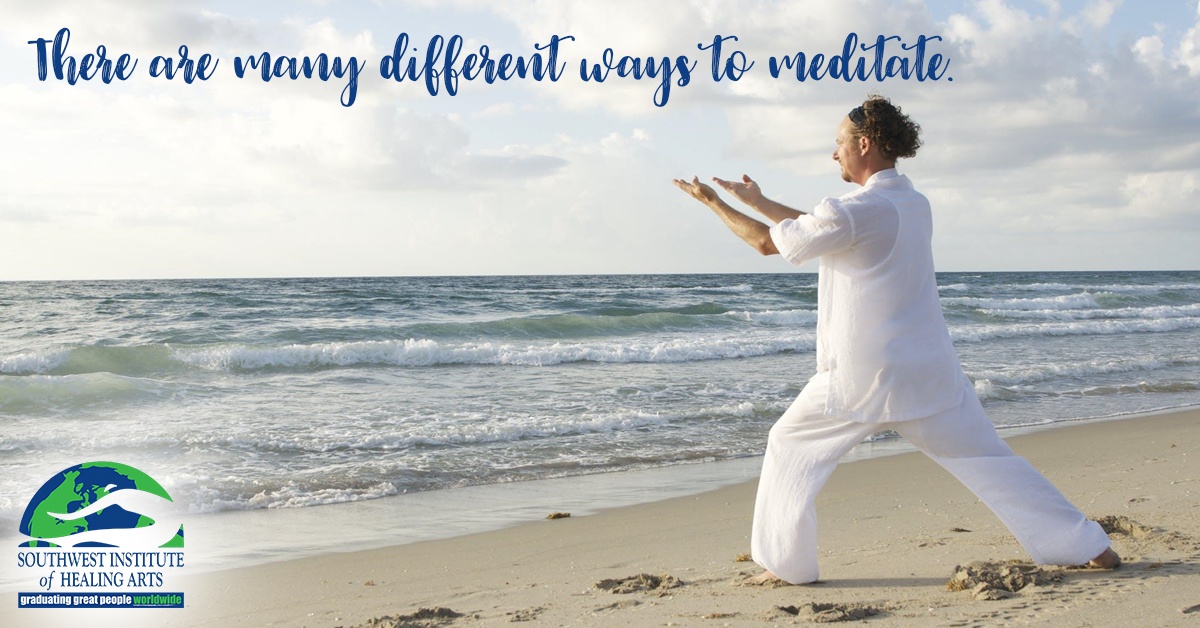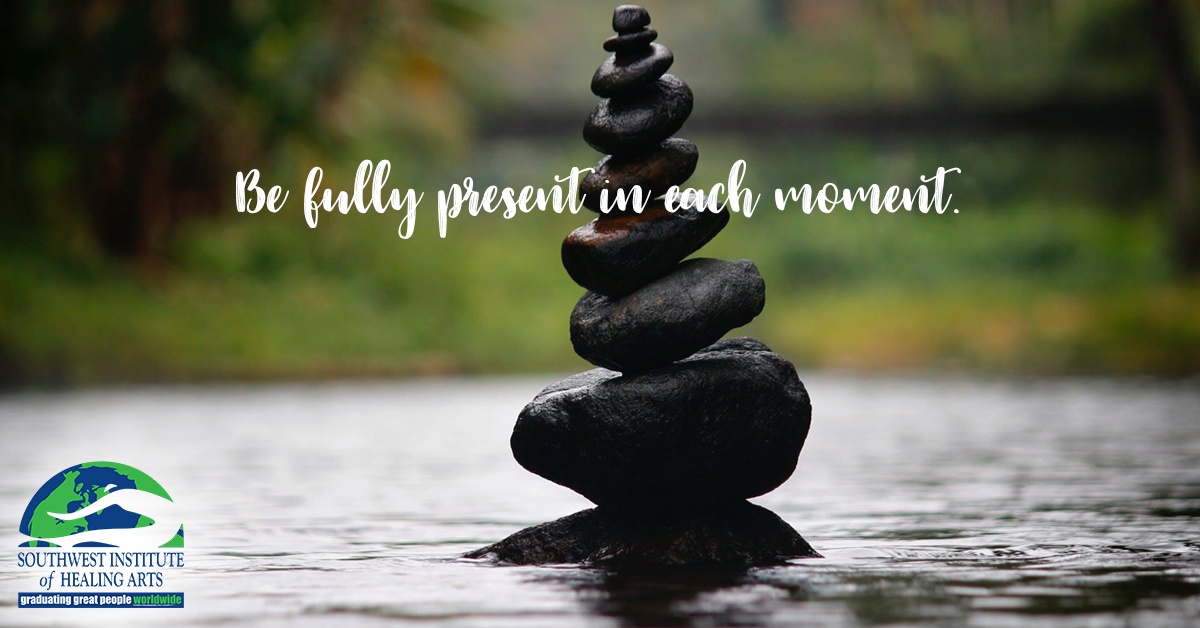Mindfulness is an ability we all possess. Just like a muscle, the more often that we choose to utilize it, the greater the ability grows. At its most basic definition, living mindfully is making the choice to be fully present in each moment. By bringing awareness to what you’re directly experiencing (sounds, scents, sensations) you can reduce ruminative thinking, improve your memory, and find a greater appreciation for both positive and negative experiences.
Meditation is a tool for becoming more mindful. It is an exploration of our internal landscape, where we unleash our natural curiosities and suspend our judgement. Often times, we’re not even aware of how busy our brains are, so by making the time to “check-in” and observe our thoughts, we can learn to better problem-solve and discover the root cause of our daily stressors and discomforts.
Though the quintessential image of meditation is cross-legged with eyes closed and hands in the chin mudra, sitting still does not work for everyone at first. Luckily, there are many different ways to meditate:
- Walking Meditation: Called kinhin in the Zen tradition, walking meditation is all about experiencing the motions of the body. The focus is on proper posture, intentional movement and steady breathing.
- Rhythmic Meditation: Practices like Tai Chi and Qigong use movement to regulate and heal the body’s chi or lifeforce. They are both contemplative practices, with Qigong being slightly more exertive than Tai Chi.
- Dancing Meditation: The act of dancing requires you to mute the ego and surrender to the rhythm. Through dance, you can release tension and get in touch with your animal instincts.
- Gazing Meditation: Trataka, or fixed-gaze meditation, is about choosing a point of focus externally while journeying inward. Some find that their focus improves when they chose an object with natural movement, like a leaf on a tree or the flame of a candle.
- Art Meditation: It’s no secret that adult coloring books are a big hit right now, and with a good reason; the act of creating art is a practice in releasing judgement and focusing on a single task.
- Guided Meditation: Through breath and physical cues, a practitioner can guide a client through a meditation and assist them in finding a peaceful state, through an in-person session or a pre-recorded meditation.
The Science of Zen

Renewed interest in holistic healing modalities has sparked countless studies in the last decade on the effects that mindfulness and meditation have on the brain. One study revealed that a consistent mindfulness practice led to a change in activity in the "default network” of the brain, which is responsible for spontaneous thoughts. Long-term meditation has also been linked with an increase in grey matter, which is where the neural cells live that make speech, movement, and emotional regulation possible, and maintaining it can essentially slow the aging process of the brain. Equally fascinating, shrinkage of the amygdala, or the reptilian part of the brain responsible for basic instincts including stress-response, has been observed, which could help to reduce the symptoms of PTSD and anxiety.
Meditation has the ability to effect these changes because of our brain’s neuroplasticity, meaning that the brain can reorganize physical connections based on external experiences. In the last decade, there have been more than one-hundred neuroimaging studies that illustrate mindfulness’ incredible ability to literally reorganize our neural networks!
The Health Benefits of Meditation

People frequently seek out meditation to find a positive outlook, sleep better, acquire self-discipline or manage symptoms of a physical condition. The studied benefits of a meditation practice include:
- Reduces Stress: Mental and physical stress causes an increase in cortisol, the stress hormone, which triggers a release of inflammation-promoting chemicals called cytokines. Mindfulness meditation has been shown to decrease cortisol levels which, aside from assisting with general happiness, means it could help manage symptoms of stress-triggered conditions, such as ulcerative colitis, fibromyalgia and autoimmune disorders.
- Regulates Blood Pressure: Meditation has been shown to be effective at combating hypertension. The American Heart Association has released studies that suggest the use of Transcendental Meditation as a complementary therapy along with standard treatment to lower blood pressure.
- Improves Attention and Comprehension: A study by Psychological Science found that two weeks of mindfulness training improved the participants’ GRE reading comprehension scores compared to a control group. It’s not totally known how this occurs, but some research has associated it with an increase in brain mass.
- Boosts Your Immune System: Due to its stress-reducing abilities, being mindful can actually keep you physically healthy! Research has found that those who meditate frequently, coupled with exercise, take less sick days than their non-meditating counterparts.
- Improves Your Mood: One of the most hailed benefits of mindfulness is its ability to simply make you feel great! Meditation has been associated with an increase of serotonin, the chemical responsible for happiness. It’s also been shown to literally rewire the circuits of our brain associated with emotional regulation.
Meditating for just ten minutes each day has be shown to jumpstart these awesome benefits.
If you’re fascinated by the science of mindfulness and want to learn how to develop your own life-long meditation practice (and help others do the same!), check out Southwest Institute of Healing Arts’ online Mindfulness and Guided Imagery Facilitator program.



